Advertisement
Still Where They 'Belong': Aquinnah Wampanoag Tribe Tells Its Story With New Cultural District
Resume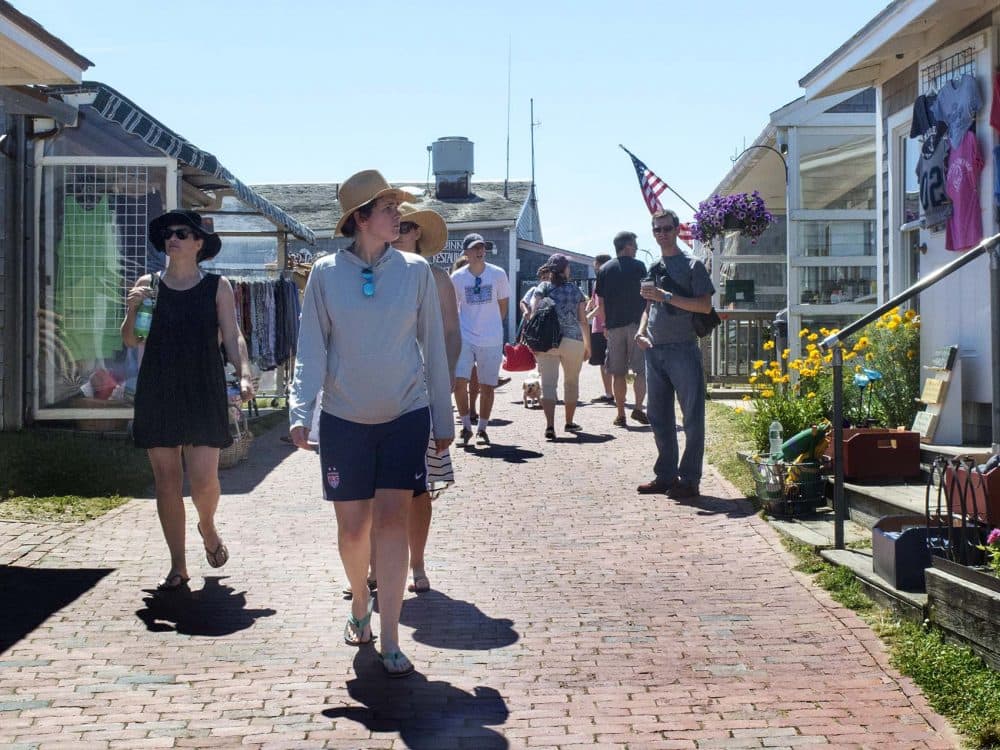
Tourists, including the First Family, flock to Martha’s Vineyard in the summer. But they don’t always make it out to the western end of the island to see the historic Gay Head Light and glowing red clay cliffs.
Even if they did, they might not know the Aquinnah Wampanoag tribe has lived on the land for more than 10,000 years. But now people from the tribe and the town of Aquinnah are working together to tell that story — and to boost the local economy — with a new, state-designated "cultural district."
A recent visit reveals what they’ve been doing, and why.
'A Very Unique Story'
On a clear day you can see the Elizabeth Islands from the dramatic Gay Head Cliffs.
Anne-Laure Francois, a professor of American history in France, took a bus from the ferry about 17 miles away after reading online about the stunning national historic landmark. She's taken by views, but she's even more excited by what she learns from a sign on the lookout’s edge.
“I didn’t know, for example, that this was Native-American land and that all the shops in the area are owned by the tribe,” Francois says. “That’s pretty impressive.”
The Aquinnah Wampanoag Tribe of Gay Head owns nearly 500 acres of the land in the area.
“We’re still out here, you know. There’s not too many tribes that are here in the state,” tribe planner Durwood Vanderhoop says, squinting in the bright sun. “It’s one of survival and determination. It’s a very unique story.”
Vanderhoop says his tribe’s narrative starts where we’re standing, with the legend of a giant Indian known as Moshup. As the story goes, he arrived here thousands of years ago.
“And he lived right here in a den besides the cliffs," Vanderhoop says.

Vanderhoop shares how the giant gave the clay cliffs their famous red colors with the blood of whales he plucked from the sea by their tails. Wampanoag men once hunted whales off these shores, too.
Vanderhoop says oral traditions like the tale of Moshup connect tribal members to their land.
Then he takes us down the sandy path toward a cluster of businesses on the bluffs. He's known this place his whole life.
“From the lookout there’s the Aquinnah Shop Restaurant, which is a family-run place owned by some of my brothers and other family that’s been here for decades,” Vanderhoop says. "And there are also about seven or eight other shops.”
Tourists can find T-shirts, local art and Wampum jewelry made from Quahog shells. A new addition is the Orange Peel Bakery, which is owned by Vanderhoop’s sister.
There's also a small, modern shed with bark siding called the Heritage Kiosk. From outside you can hear the rhythmic thumping of drums piped through speakers. Inside you also find traditional tools, stacks of firewood, a large map of Martha’s Vineyard and a brief write-up of the tribe’s history in Aquinnah (which translates to “Place at the End of the Island”).
Seeking To Attract More Tourists
Up until a few decades ago, Vanderhoop says, fishing and agriculture provided livelihoods for the tribe. Now it’s all about tourism. But it turns out that economic driver is actually nothing new.
“It’s been going on much longer than people might suspect,” says Richard Skidmore, who's been keeper of Gay Head Light since 1990.
During a tour of the lighthouse, Skidmore shows me a photo, from the late-1800s, of tourists who traveled here by steamship.
“This particular picture is of the dock that no longer exists, and an oxcart with some fancy-dressed people in it — and then a Wampanoag fellow who’s going to lead them right up to where we are right now, the Gay Head Light,” he describes.
Skidmore says the natives were an attraction, but they were also savvy business people. They owned inns and restaurants. Then Skidmore quotes a sell-line from a brochure of the time: “Come visit a village of red men — meaning the Wampanoag tribe in what was then known as Gay Head — and see the most magnificent light on the East Coast.”
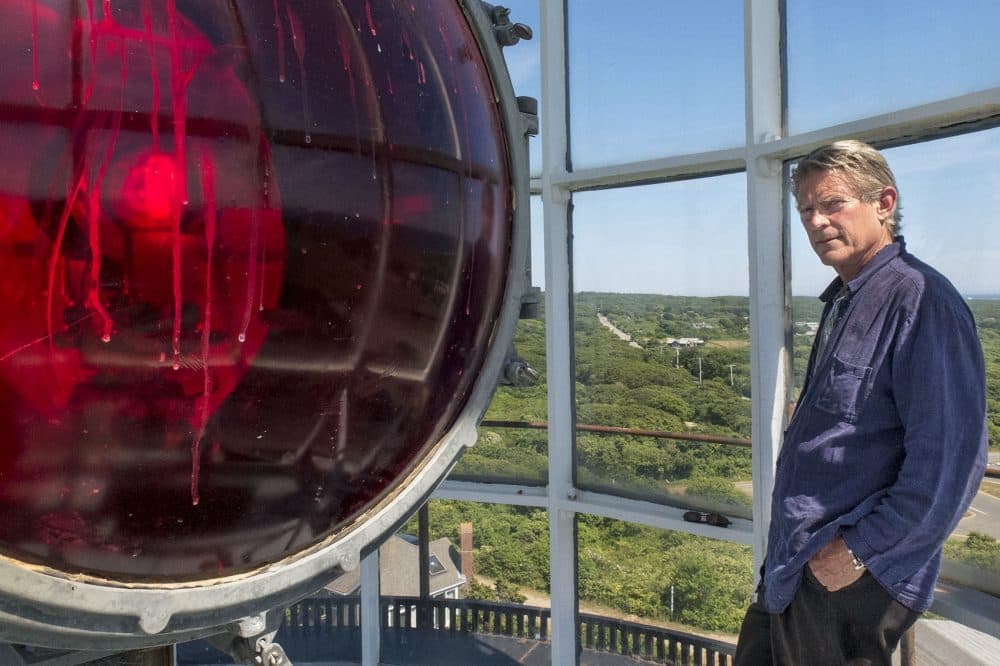
Now the federally recognized tribe is hoping to attract more tourists, and other islanders, to the Gay Head Light and the other sites along the perimeter of a dead-end drive known as Aquinnah Circle.
That's why they formed a planning group with officials and residents of the town of Aquinnah to apply for state recognition as a cultural district. There are 34 of these walkable zones in Massachusetts, including one other on the Vineyard. These districts receive grant money and support to elevate their stories, bring in more visitors, and spur economic development.
The Aquinnah Cultural Center is playing a big part in the storytelling effort. It’s right across the circle from the Gay Head Light and is the former homestead of Edwin Devries Vanderhoop, the first Wampanoag to sit in the Legislature. (There's a long line of Vanderhoops in the Wampanoag tribe.)
A Project To 'Break Down Barriers'
Program director Linda Coombs says she hopes the new cultural district will help clarify a few commonly held misperceptions.
“People ask us all the time, ‘So how far back does your Indian heritage go?’ And we look at them and say, ‘Um, all the way,' " she says.
Coombs explains that Aquinnah was one of the 69 original villages of the Wampanoag Nation on the Vineyard. When the English arrived in the 1600s they pushed the tribe to the very end of the island. Its members struggled to survive the dislocation from their ancestral home. They contracted foreign, sometimes deadly, European diseases.
Today the tribal members are dedicated to preserving their legacy, land, language and culture.
Tobias Vanderhoop, chairman of the Wampanoag Tribal Council, believes the new cultural district will help. “Hopefully this project can break down barriers and we can get that story out there,” he says.
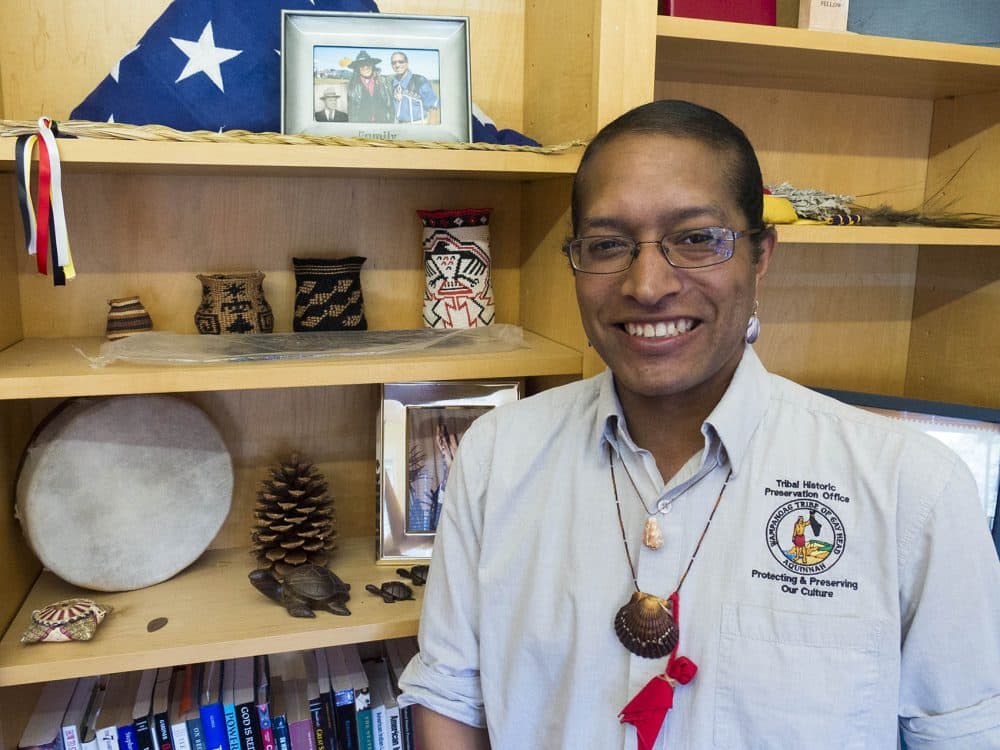
Apparently the project is also breaking down barriers between the tribe and the town.
The two groups have been butting heads over the Aquinnah Wampanoag’s efforts to build a casino on Martha’s Vineyard. Everyone I spoke to for this story said this new cultural district represents one of the first times the town and tribe have been able to work together.
The novelty of this collaboration is not lost on Anita Walker, executive director of the Massachusetts Cultural Council, the state agency that granted the cultural district designation.
Walker is clearly proud to share one more first. “We are so excited that we now in Massachusetts have the very first in the country cultural district that is a joint project of a town and a tribe,” she says.
Walker said everyone needed to be on-board in order for the state to grant cultural district status. Both the town and the tribe passed resolutions of support.
Aquinnah Town Administrator Adam Wilson says now the two entities will work together to map out a course for the area's future, which includes fundraising.
“There’s actually two governments in the little town of Aquinnah,” he says, “with 400 year-round residents.”
'We’re Still In The Place That We Belong'
Local bookbinder Mitzi Pratt has lived in Aquinnah for more than 30 years and is part of the new district’s planning team. She was also instrumental in the efforts to move Gay Head Light and the renovation of the Vanderhoop homestead.
For her the Wampanoag businesses, historical sites and beautiful bluffs at the end of the island are the town’s “economic and spiritual core.” Last year Pratt says that source of energy was depleted when two of the storefronts went vacant. “I’m very glad that didn’t continue for another season,” she says.
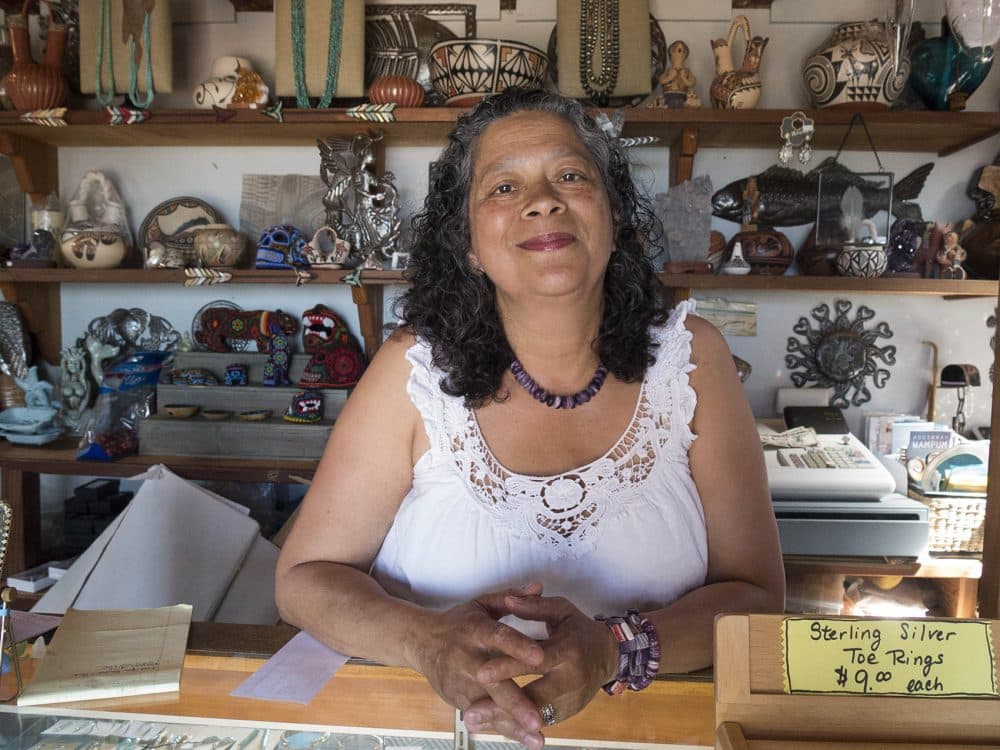
Tribal member Berta Welch recalls the drop in the number of tourist buses a few years back.
“It was like a ghost town up here,” she says.
That's one reason why Welch got involved in the cultural district effort. She sells wind chimes, Wampum jewelry and other crafts at the Stony Creek Gift Shop on the cliffs. Her mother opened the store 75 years ago. Welch has worked here her whole life and is enthusiastic about the tribe-town collaboration.
She’s been on the zoning and planning boards for the town of Aquinnah for 30 years, is president of the Aquinnah Cultural Center (among other posts) and acknowledges getting everyone to see eye-to-eye hasn’t always been easy.
“The town and the tribe have not had a lot of experience doing that together. So it was an exercise,” she says. “We want to be protective of our culture, too. It’s not about merchandising it. Exploiting it. And although I don't think that was really a struggle, I just think it's something that needed to be ironed out.”
There will be plenty more for the planning team to agree on, including improved signage, walkways, landscaping, programming and marketing.
In the end Tobias Vanderhoop predicts it'll all be worth it.
“At times people have an idea of what native people should be…or what we are…or that maybe we faded away,” he says. “But all people belong to a place. For our people we’re still in the place that we belong. The place that runs through our blood.”
An upcoming Wampanoag cultural event in the newly created cultural district is the annual "Pow Wow" in September.
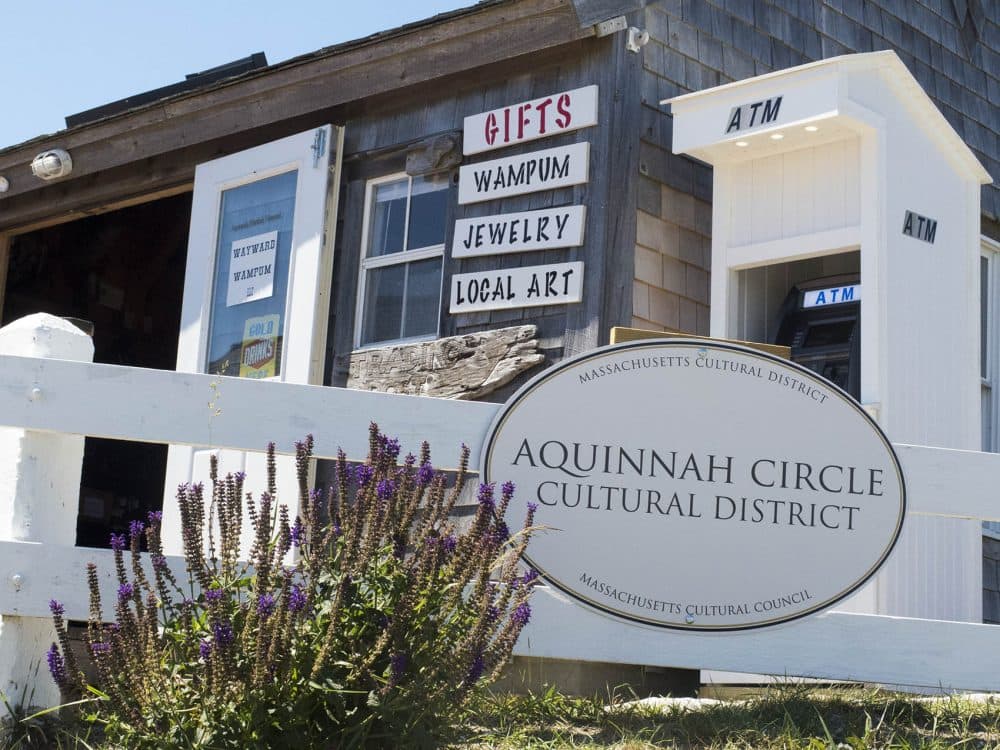
This segment aired on August 9, 2016.
